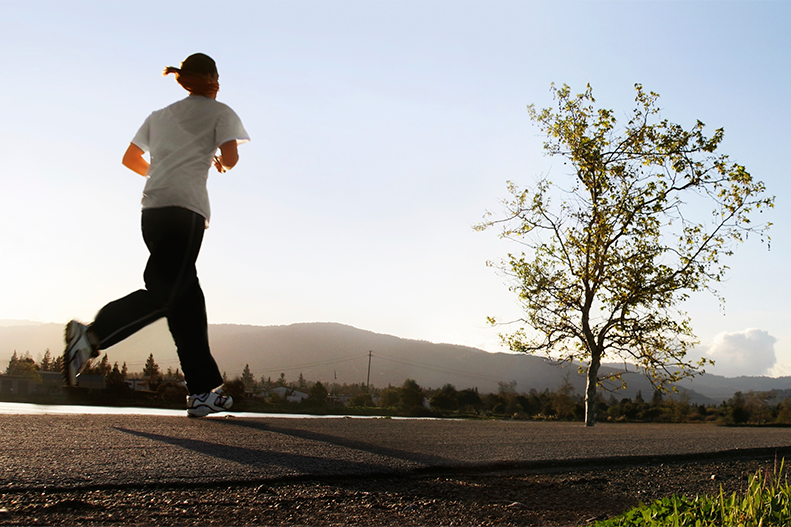Medial tibial stress syndrome (MTSS), more commonly known as shin splints, is an overuse injury. It’s defined as pain along the tibia (the long bone in the front of your lower leg) that occurs during activity. This pain takes place when too much stress or force is placed on the tibia and surrounding anatomy.
Shin splints are one of the most common complaints of athletes. Each year, as their sports go back into season and practices start back up, athletes push themselves to get back into shape. As a result, runners and other running athletes frequently end up with discomfort on the inside of the lower leg. Chances are good that the pain comes from shin splints.
Those who experience MTSS describe their symptoms as pain along the tibia during and/or after activity, as well as tenderness to the touch.
Never Miss a Beat!
Subscribe to Our HealthBeat Newsletter!
Thank you for subscribing!
You can now select the specific newsletters you'd like to receive.
You are already subscribed.
Subscribe to more newsletters in our email preference center.
Sorry, an error occurred. Please try again later.
Get Healthy Tips Sent to Your Phone!
Causes of Shin Splints
Sometimes it isn’t just starting to exercise too quickly or too soon that can cause this pesky injury. In addition to not increasing your exercise gradually, there are other factors that can make you more likely to get MTSS. Some of these include:
- Problems with the arch of your foot.
- Muscular imbalances in the lower leg.
- Running on hard and/or inclined surfaces.
- Changing running surfaces frequently.
- Wearing inadequate shoes.
Primary care sports medicine physicians can diagnose your shin splints by taking your medical history, performing a physical exam, and talking to you about your activity level and fitness routine.
Imaging and diagnostic tests are often unnecessary unless your doctor suspects a more serious problem like a stress fracture along the shin bone.
Treating Shin Splints
You often can treat shin splints at home with advice from your doctor. But be sure to call them if the initial recommendations don’t work or your condition worsens.
Some recommendations for treating MTSS include:
- Rest. This is usually the biggest component in getting rid of this injury. Consider taking a day or two off from running once or twice a week. You can even cross-train on those days.
- Ice. Icing your shins for about 15 minutes after activity helps to combat the inflammation that is taking place in your lower legs. Consider freezing water in a small paper cup, creating an easy shape to rub the ice up and down your shins.
- Medicine. Taking occasional nonsteroidal anti-inflammatory drugs (NSAIDs) like naproxen or ibuprofen can help ease the pain.
- Compression therapy. Using neoprene sleeves or therapeutic tape can increase blood flow to the area and help with the inflammatory response to an acute injury.
Preventing Shin Splints
Strengthening the muscles of your lower leg by adding strength training to your routine can help prevent shin splints. To help reduce the stress on your lower leg, try adding cross-training to your workout. Add in low-impact workouts like:
- Swimming
- Walking
- Biking
- Yoga
Other ways you can help prevent shin splints include:
- Slowly increasing the duration, frequency, and intensity of your running routine or workouts.
- Wearing quality running shoes that fit well.
- Adding shock-absorbing insoles to your running shoes.
- Using a foam roller right after your workout – before stretching.
- Stretching before and after exercise.
A sports medicine doctor or physical therapist can provide the best advice for preventing shin splints. Athletes who listen to their bodies and adjust as needed are in a better position to achieve optimal long-term performance.
Editor's Note: This article was originally published on , and was last reviewed on .
About Sports Medicine
An athletic lifestyle carries the potential for injury. Whether you’re an elite athlete or a weekend warrior, UPMC Sports Medicine can help. If you are looking to prevent, treat, or rehabilitate a sports injury, our multidisciplinary team of experts can help you get back into the game. If you are seeking to improve your athletic performance, we can work with you to meet your goals. We serve athletes and active people of all ages and experience levels. Our goal is to help you keep doing what you love. Visit our website to find a specialist near you.
